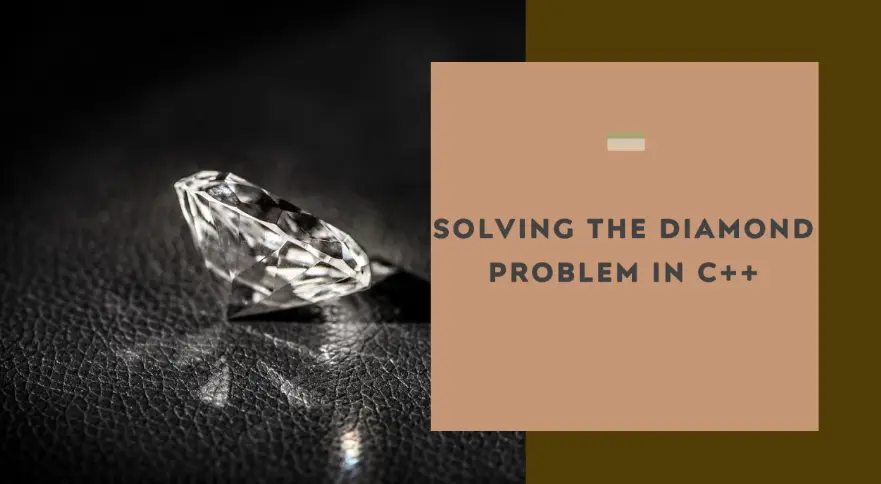In the intricate world of C++ programming, the “Diamond Problem” presents a unique challenge, especially as developers venture into more complex object-oriented designs. Understanding this problem and knowing how to navigate it is crucial for maintaining robust and efficient codebases. Let’s delve into what the diamond problem is, illustrate it with an example, and explore strategies to avoid its pitfalls.
What is the Diamond Problem?
The diamond problem occurs in languages that allow multiple inheritances, like C++, and refers to a scenario where a class inherits from two classes that both inherit from the same base class. This situation creates ambiguity about which base class properties and methods the derived class should inherit, as it essentially has two paths to the same base class, forming a diamond-like structure in the inheritance diagram.
A Classic Example
Imagine we have a base class Vehicle, from which two classes derive: Car and Boat. Both Car and Boat inherit Vehicle‘s properties, such as maxSpeed. Now, we introduce a new class, AmphibiousVehicle, which inherits from both Car and Boat.
Vehicle
/ \
Car Boat
\ /
AmphibiousVehicleThe question arises: If AmphibiousVehicle tries to access or modify maxSpeed, which path does it take? Does it use Car‘s maxSpeed or Boat‘s? This ambiguity is the essence of the diamond problem.
Strategies to Avoid the Diamond Problem
-
Virtual Inheritance: C++ offers a solution through virtual inheritance, which ensures that the class at the top of the diamond (in this case,
Vehicle) is only inherited once. By declaring the inheritance ofVehiclebyCarandBoatasvirtual,AmphibiousVehiclewill have a single, unambiguousVehiclebase class.
class Vehicle {
public:
int maxSpeed;
};
class Car : virtual public Vehicle {};
class Boat : virtual public Vehicle {};
class AmphibiousVehicle : public Car, public Boat {};-
Composition Over Inheritance: Another strategy is favoring composition over inheritance. Instead of inheriting from
CarandBoat,AmphibiousVehiclecan contain instances of these classes. This approach not only avoids the diamond problem but also promotes more flexible and maintainable code design.
class AmphibiousVehicle {
Car myCar;
Boat myBoat;
// Use myCar and myBoat as needed
};-
Interface Segregation: Using interfaces (abstract classes with only pure virtual functions in C++) instead of concrete classes for
CarandBoatcan also mitigate the problem. This way,AmphibiousVehiclecan implement the functionalities of both interfaces without directly inheriting their implementations.
Conclusion
The diamond problem in C++ highlights the complexities of multiple inheritances and the need for careful architectural decisions. By employing strategies like virtual inheritance, composition, and interface segregation, developers can avoid the ambiguities and pitfalls associated with this problem, leading to clearer, more maintainable code.
As you design your C++ applications, keep these strategies in mind to navigate around the diamond problem effectively and efficiently.


